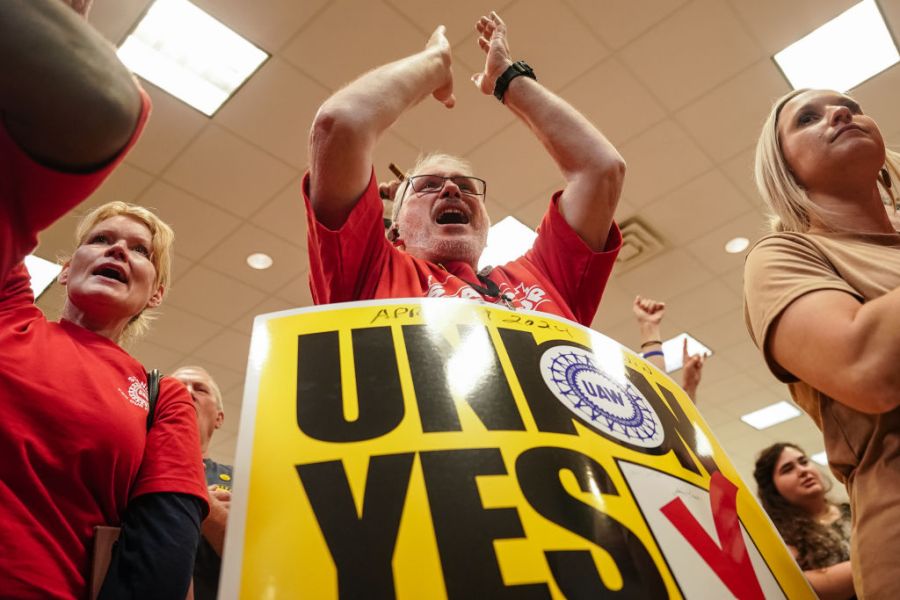For decades, nonpartisan research on cost-of-living differences between states, conducted by government agencies and independent economists, has shown that the cost of living is lower in right-to-work states. To put it in technical terms, they have found a strong correlation between higher living costs and policies authorizing termination of employees for refusal to pay union dues or fees.
The annual interstate cost-of-living indices for 2023, published this February by the Missouri Economic Research and Information Center (MERIC), confirmed this. Families and individuals in the two dozen states that still lack right-to-work laws — laws that bar forced union dues and fees as a condition of employment — continue to pay significantly more for housing, utilities, health care, and other necessities.
In fact, our analysis of MERIC’s findings shows that, among the 14 states with the highest cost of living last year, not one has a right-to-work law. Meanwhile, 14 of the 15 lowest-cost states protect employees’ right to work as of 2023.
When 2023 disposable personal income (personal income minus taxes) data, as reported by the U.S. Commerce Department, are adjusted for differences in living costs, four of the five highest-ranking states have right-to-work laws. Meanwhile, six of the seven bottom-ranking states lack such laws.
Overall, the average disposable income per capita in right-to-work states last year, adjusted for the cost of living, was $59,329, or roughly $2,800 higher than the average of the other states.
No one should be surprised that right-to-work states enjoy a purchasing power advantage over forced-unionism states equivalent to more than $11,000 a year for a family of four. As economist Richard Vedder explained in the New York Times in 2015, “Capital moves to right-to-work states with a more stable labor environment, and that increases labor demand and, ultimately, income and wages.”
While Vedder is a supporter of right-to-work laws, his core point — that monopolistic unionism is associated with lower business investment in physical capital and research and development — is accepted in our time by economists of all stripes, including Harvard’s Richard Freeman, who is arguably America’s leading academic apologist for Big Labor and the special privileges it enjoys under U.S. labor law. And there is no known economic theory explaining how lower business investment might lead to higher living standards for workers.
Nevertheless, a number of academic allies of union officialdom continue to claim that corralling workers into unions really does make them better off. One such effort that has recently received a significant amount of media attention is an ongoing study, updated this March by a team of Big Labor academics and published by the union-funded Center for American Progress.
The headline claim of this study is that union households are, on average, $100,000 wealthier than non-union households. To get this result, CAP stacks the deck in several ways. For starters, it doesn’t even bother to address the evidence — again, based on government and nonpartisan research — that when adjusted for the cost of living variations between states, after-tax incomes are higher in right-to-work states.
They even go so far as to pretend that sky-high housing costs borne by residents of forced-unionism states such as California and New York are good rather than bad for employees and their families. To put it simply, their treatment of wealth effectively turns high housing costs into a positive instead of a negative.
The nationwide median price for an existing home is $387,600, but this figure varies dramatically from state to state. In the Golden State, the median is $793,600 — more than twice the national average and the highest in the country. Empire State housing is also quite expensive, with a median price of $649,000, higher than 47 other states.
Exorbitant housing costs in California, New York, and many other non-right-to-work states stem from “costly mandates and bad policies,” and they make families worse off, not better off. That’s why so many families have been fleeing those states in recent years, leading to slow growth in some of these states and actual population loss in others.
But if CAP’s analysis were correct, states that are manifestly inhospitable toward the middle class would be ideal places for middle-class families to “build wealth.” What the CAP study really shows is just how far out-of-touch apologists for forced unionism are with reality.
Stan Greer is a senior research associate at the National Institute for Labor Relations Research.
